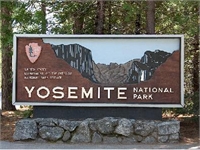
How to See Yosemite’s Highlights in Only 3 Days (Part I)
Important Notice: Our web hosting provider recently started charging us for additional visits, which was unexpected. In response, we're seeking donations. Depending on the situation, we may explore different monetization options for our Community and Expert Contributors. It's crucial to provide more returns for their expertise and offer more Expert Validated Answers or AI Validated Answers. Learn more about our hosting issue here.

How to See Yosemite’s Highlights in Only 3 Days (Part I)
You must be logged in to post a comment.
With a tight schedule and only three days of vacation available, you want to spend them seeing something new with the family, without spending too much. Or maybe you’re visiting the United States for the first time and have so much to see that three days is all you allotted for Yosemite.
Here’s a whirlwind itinerary that will allow you to catch most of Yosemite’s most accessible highlights in little time and on little money. I just hope that you enjoy driving—and bring along games for the kids for those long drives, or at least some diversions.
Day One
A. Find Campsite
Be sure to top off your gas tank before entering the park. Gas stations are few and very far between in Yosemite. Gas is also far more expensive, so try to refuel outside the park if you can.
Most of the “hikes” listed below are wheelchair accessible (and those with handicapped placards can park nearer a couple attractions, like Mirror Lake and Happy Isles, and shorten the distance they have to walk or roll, as the case may be; however, you have to get a special placard at the park entry station when you arrive), and there are wheelchair accessible campsites all over the valley, in Wawona and also in Hodgdon Meadow.
By far the best place to camp for this itinerary is Bridalveil Creek Campground, which is central to almost everything, and simultaneously fairly far from everything. At an elevation of over 7,000 feet be prepared for thin air and very cold nights (often sub-freezing, even in mid-summer). It never gets hot here (it does in the Valley and Wawona; it can also get smoggier in the valley than Los Angeles, so asthmatics, bring your inhalers!), it is quieter and more wilderness-oriented at Bridalveil Creek and it’s the prettiest campground in the park. Try to get a space on the outside of the loop; these are less exposed and more spacious than the ones inside the loops. A-Loop places you by the meadow and its brook; B-Loop places you among granite boulders (some of these spots are very private) and C-Loop places you near Bridalveil Creek. Only A-Loop allows pets. Keep in mind that if you keep an exotic pet that happens to be indigenous to the Sierra Nevada Mountains (like a squirrel, raccoon, marmot, weasel—including ferrets—a coyote or, God forbid, a wild cat like a bobcat or puma), a ranger may come by, think that you caught the animal and demand that you release it, so use your head.
B. Wawona
While in Wawona, you can refuel if necessary, do laundry if needed (unlikely, as you just arrived in the park), do some grocery shopping and tour gift shops selling cheap souvenirs that all say “Yosemite.”
Head back to your campground no later than mid afternoon. It’s less than an hour’s drive, but if you stop at your campsite, don’t stay there for too long, because there are three more easy-to-see things on today’s itinerary that you may want to revisit during your stay, as they are relatively close to your campground.
C. Glacier Point Road
At the end of the road is the large parking lot for Glacier Point. The walk up to the point itself will be possibly the longest one of the day, uphill all the way, but at least it’s paved. And if you get there well before sunset, you will have the most amazing view of the valley available in the park, at least from an overhead perspective. If you spit over the side at the right place, you may eventually moisten someone in Camp Curry, 3,000 feet below. From the point, you will see all of Yosemite’s most famous prominences: Half Dome (the classic angle), El Capitan, North and Basket Domes and below them the Royal Arches, as well as the park’s most famous feature, Yosemite Falls. The point is located atop the northeastern corner of the same plateau supporting Bridalveil Creek, affording visitors a nearly 270 degree vantage of both Big and Little Yosemite valleys, their fantastic rock formations and many of the waterfalls. On certain nights you can attend a Star Party, where people bring out large reflector telescopes and let visitors explore our galaxy once Yosemite is too dark to see. But on this first day in the park, I recommend that you head back to your campsite well in advance of sunset. Preparing dinner on a camp stove in the dark can be tricky.